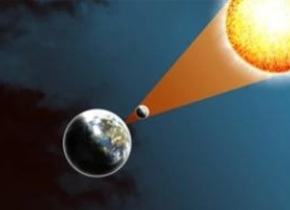

2017年密歇根科学素养调查发现,去年发生的日全食让美国人对天体科学更感兴趣了。
Where were you on August 21, 2017? If you’re like me—and a couple hundred million other Americans—you were watching the total eclipse of the sun.<
2017年8月21日你在哪儿?如果你像我、和其他几亿美国人一样,在观看日全食。<<声音来自凯伦·霍普金以及和她一同观看日食的人们>>
It was breathtaking. Mind-blowing. Awesomely spectacular—and potentially educational. Because a new study shows that folks who saw the celestial event sought information on solar eclipses about 16 times both before and after the big day.
日全食十分壮观令人叹为观止、令人兴奋。而且这场日全食还具有潜在的教育意义。因为一项新的研究表明,参与观测这次天文事件的人在日全食之前和之后上网搜索关于日食的信息的次数是平时的16倍。
In the U.S., some 216 million adults viewed the eclipse. That’s 88 percent of the adult population. This viewership dwarfs that of the Superbowl and ranks among the most watched events in American history. That’s according to the Michigan Scientific Literacy Survey of 2017.
在美国,约有2.16亿成年人观看了日食。这占据了成年人口的88%。日全食的“收视率”超过了“超级碗”,成为美国历史上最受关注的事件之一。这个结论是根据2017年密歇根科学素养调查得出的。
Jon Miller of the University of Michigan conducts a national study of Americans’ scientific know-how twice a year. But last year, he added another survey over the week or two after the eclipse, while the experience was still fresh.
密歇根大学的乔恩·米勒(Jon Miller)每年两次对美国人的科学知识进行全国性研究。但去年,他在日食后的一两周内趁着人们仍然对日全食感到新奇的时候又增加了一项调查,。
He discovered that in the months prior to the eclipse, there was a flurry of interest in the phenomenon. People searched online for eclipse-related information and talked about it with family and friends.
他发现在日食发生之前的几个月里,人们对这种现象产生了浓厚的兴趣。人们在网上搜索与日食有关的信息,并与家人和朋友谈论。
And the nearly 20 million who traveled to see the eclipse were even more hungry for heavenly knowledge, averaging nearly 25 episodes of eclipse-related information seeking. In comparison, those who for whatever reason missed the event only reported reading or chatting about it six times.
前往特定地点观测日食的近2000万人更渴望获得有关天体的知识,他们平均有近25个讨论日食的对话。相比之下,那些出于各种原因错过了这一事件的人平均阅读或谈论日食的次数只有六次。
But the interest didn’t end with the sun’s reappearance. After the event, people kept on reporting online-learning and continued conversations. [Jon D. Miller, Americans and the 2017 Eclipse A final report on public viewing of the August total solar eclipse]
然而人们的兴趣并没有随着太阳的再现而结束。在日全食结束后,人们继续上网搜索了解日食并且持续讨论相关话题。
Miller’s survey also indicates that by the end of 2017, 70 percent of those questioned were able to explain the meaning of a total solar eclipse. That’s a considerable step up from the 50 percent who understood what an eclipse was at the beginning of the year. Even people who didn’t see the eclipse were more likely to correctly define it by year's end, suggesting that the media coverage and general hubbub rubbed off.
米勒的调查还表明,在2017年底,70%的受访者能够解释日全食的意义。与年初只有50%的受访者了解日食的情况相比,这是一个相当大的进步。即使是那些没有看到日食的人也更有可能在年底之前正确地定义它,这表明媒体的报道和抹去了大众的无知。
However, the eclipse mania did not appear to boost our overall understanding of the relationship of the Earth and the sun. The percentage of respondents who knew that the Earth circles the sun once each year remained essentially unchanged, at around 64 percent. These findings should give science communicators added incentive to get the word out before the next big North American eclipse: April 8, 2024.
然而,对于日食的狂热似乎并没有提升我们对地球与太阳关系的整体认识。知道每年地球绕太阳转一次的受访者百分比基本保持不变,约为64%。这些研究结果应该为科学传播者增加动力,让他们在下一次大北美日食之前宣布这个词:2024年4月8日。
 京公网安备11010502039775号
京公网安备11010502039775号